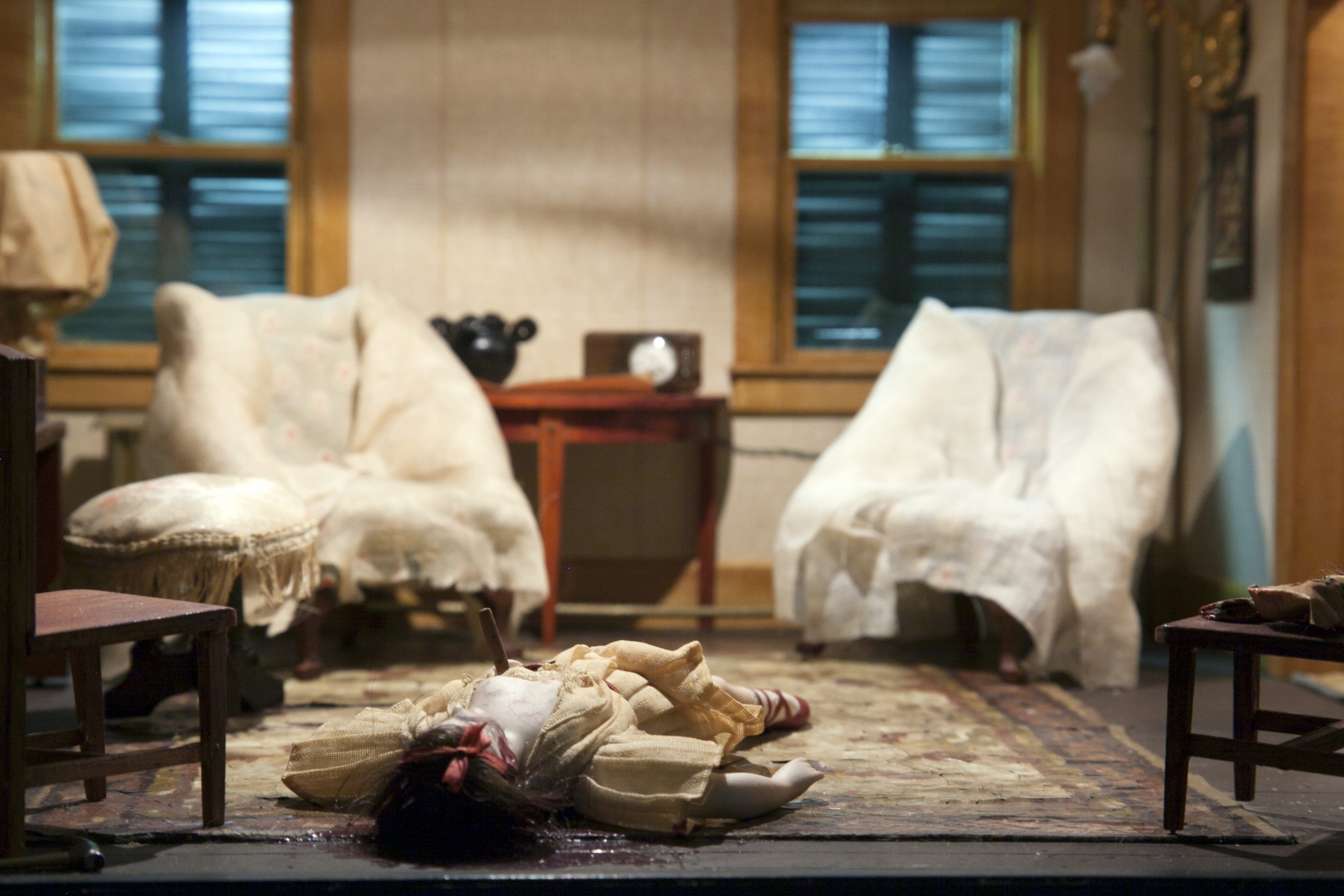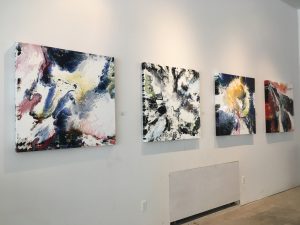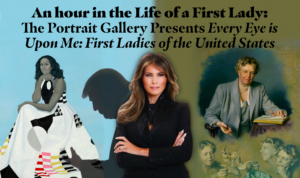A doll hanging from a noose is exactly the sort of image that sends a shiver down the spine — after all “dolls and death” are a pretty unsettling duo — but Frances Glessner Lee’s dollhouse death recreations are a fascinating and macabre study in perspective and attention to detail.
From now through January, the Renwick Gallery of the Smithsonian American Art Museum will be showcasing, “Murder Is Her Hobby: Frances Glessner Lee and The Nutshell Studies of Unexplained Death,” presenting the works of Frances Glessner Lee for the first time to the public eye. Lee, “the godmother of forensic science,” is most well-known known for “Nutshell Studies of Unexplained Death,” miniature, doll-house dioramas that she created during the 1940’s replicating the mysterious death of a person or persons. Within the crime investigation field, Lee was an advocate for the medical examiner system over the coroner system – medical examiners are required to be physicians, coroners are not – and her dioramas, or “nutshells,” as she called them, were designed to be learning aids for forensic trainees.
Lee was born in 1878 and grew up in a very traditional but very wealthy family. Although she found an early interest in forensic pathology, only her older brother was allowed to attend college. It wasn’t until after both her parents and her brother passed away in the early 1930s that she was able to use her inheritance to pursue her true interests. Lee created her nutshells to teach officers what to look for at crime scenes, while still taking care to preserve the integrity of the scene. Her dioramas are still used today in Baltimore, Maryland at the Office of the Chief Medical Examiner to teach crime scene investigation techniques.
Each scenario was based on a real death, with the finer details fleshed out by Lee herself. With the help of her family carpenter, Alton Mosher, she brought crime scenes back to life. The pair spent about three months per nutshell, as Mosher constructed the rooms fitted with working doors and electricity while Lee crafted the figurines and props and staged each of the rooms. Each piece cost today’s equivalent of $40,000 to $80,000, but it was a small sum to pay for her mission of encouraging all to, in her own words, “convict the guilty, clear the innocent, and find the truth in a nutshell.”
The scenes themselves are striking in their realism, not afraid to shy away from blood or uncomfortable reality. In “Parsonage Parlor,” a young woman lies in a pool of blood with her blouse ripped open, and in “Three-Room Dwelling,” a baby has been shot in its crib. Many of the murder scenes look as if they could have been an accident or suicide — one woman was found face down on the stairs, another man in a locked garage with the car running — but the slightest of details — an overturned bucket in the corner or a coil of rope kicked under a railing — imply that there’s much more than meets the eye.
Each detail is deliberate, from the half-peeled potatoes on the counter in Kitchen to the tiny stubbed out cigarettes in Living Room. Lee once rejected a rocking chair that Mosher built because it didn’t rock the same number of times as the original at the crime scene. She even took care to accurately depict both rigor mortis, stiffness of the body after death, and lividity, the way blood settles in a dead body, in her figurines. The less significant details — wallpaper designs, paintings hanging on the walls — were created from her own imagination, lending a storytelling element to her recreations.
Historically, dollhouses were used to teach upper class girls how to manage and keep a house. Lee flips the script by adopting a stereotypically female craft to forge her way through a male-dominated field. Rather than showing young women how to be good housewives, Lee was showing young men how to be good investigators. Due to her contributions to the field, the New Hampshire Police Department appointed her as Police Captain in 1943, making her the first woman in the country to hold that rank.
Each nutshell is accompanied by a police report written by Lee, and these are the exact reports that trainees receive when they investigate the nutshells themselves. Unfortunately, the answers to the crime scenes are under lock and key in the Baltimore police department and visitors must rely on their own skills of deduction to determine cause of death. It’s largely unsatisfying to never know the truth behind the exhibits. “Kitchen,” included a place where visitors could to add their own deductions to a wall of sticky notes. Answers ranged from “It’s ALWAYS the husband” to “Alien invasion from the planet Zorpe,” to long-winded breakdowns of the nutshell spanning several sticky notes. This section provided an interesting peek into the thought processes of other visitors, and the exhibit would have felt much more interactive had a wall been included for every one of Lee’s works.
Frances Glessner Lee was a revolutionary in her field and maintains a lasting legacy. Though her nutshells were built in the 40s, they’re still used to teach the fundamentals of crime scene investigation today. Lee seized the opportunity to make a name for herself in a field that had once been closed off to her. Her meticulously crafted recreations are both a message of determination and a call for scrutiny over assumption. An unfortunate accident could be masking a cold-blooded murder, obscured only by the details hiding in plain sight. In a nutshell, a closer look can be the difference between sentencing an innocent person and letting a killer walk free.





